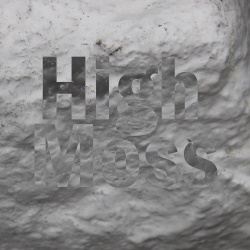
House of Pitfour
Music by Haworth Hodgkinson
High Moss HM 022 (70:32) • Released 29 February 2020
All music composed, performed and recorded by Haworth Hodgkinson from 2016 to 2019
Cover from a photograph by Haworth Hodgkinson
Album © Haworth Hodgkinson 2020
Downloads: Album • CD booklet (PDF) • CD inlay (PDF)
Links: Haworth Hodgkinson
Buy album via Bandcamp (secure)
House of Pitfour (2016–2019)
The Pitfour estate near Mintlaw in Central Buchan is a place I frequently visit. Although privately owned, it welcomes walkers, and there are many well-maintained paths and tracks around an ornamental lake and into the forests. The original estate buildings, many in a state of disrepair, include such curiosities as a replica Temple of Theseus in which alligators were reputed to have been kept, an observatory tower for watching horse races, a stable block with underfloor heating to keep the horses warm, and a chapel now converted into a private dwelling. These sit awkwardly alongside modern houses of extravagant construction. From much earlier times there is also a recumbent stone circle in a clearing in a wood.
The original estate house was demolished in the 1920s, but I imagine that if it had survived it would probably have contained many oddities too, and in my House of Pitfour I imagine a guided tour of some of its rooms and spaces. I have deliberately inverted the name from Pitfour House to emphasise that this is fantasy not based on fact, and for the cover illustration I have used an image of what remains of the stables.
The music is made from percussion sounds, recorded at the Quaker Meeting House in Aberdeen in 2016 during a sampling session with Colin Edwards. Electronic processing of the sampled sounds is limited to varying the pitch by changing speed, and various kinds of reverberation, including extended stretching to produce continuous sounds.
Composition and recording of my pieces took place in various stages from 2016 to 2019, with two of the original 2016 pieces remade from scratch in 2019. Each piece is essentially non-developmental, a steady-state evocation of the imaginary room or space suggested by its title.
I. Fitted Vestibule (2016/2019)
Small gongs were recorded in the vestibule of the Quaker Meeting House. A three-note descending phrase repeats and transforms itself into a three-note ascending phrase.
II. Marble Escalator (2019)
This piece is fractal in nature - it incorporates copies of itself played at different speeds, so that it would sound much the same played back at half speed, double speed, even quarter speed or quadruple speed.
III. Splashroom (2016)
Dipping metallic percussion instruments into water to bend their pitch is an old percussionist's trick. It is usually done gently for a subtle effect, but here I deliberately dip the cymbals and gongs so vigorously that the splashing of the water can be clearly heard.
IV. Mirror Caverns (2016)
Cymbals and drums dominate here, with various non-electronic techniques used to produce sustained sounds. Cymbals are rubbed with wooden sticks to make them sing, drumskins are rubbed with the thumb, and cymbals are played very close to drums so that sympathetic resonance occurs in the drumskin, which can be varied by changing the tension in the skin.
V. Engine Chamber (2018)
The sounds in this piece are all made not with the instruments we brought into the Quaker Meeting House but with things that we found already there, including a resonant waste-paper basket, a drawer full of cutlery, a large soup pot, and a flexible "Do not disturb" sign.
VI. Spiral Corridor (2016/2019)
An instrument of Colin's creation provides the sounds here: a long strip of aluminium coiled into a spiral and played with a bow.
VII. Echo Dome (2019)
One of the limitations of gongs is that they have to be suspended at two points, and the string or rope that is used to suspend them inevitably damps a little of the resonance. The suspension points are normally chosen to be nodal points for the principal modes of vibration so as to minimise this effect. An alternative approach, that I use here, is to throw a gong into the air and strike it whilst it is in free fall with no strings to restrict its vibration. Of course I then have to catch the gong before it hits the ground, so its free vibration is of limited duration. I then use exaggerated electronic reverberation to keep the sound going, creating the illusion of gongs floating in an enormous echoing space.
VIII. Communication Shaft (2019)
Colin again provided the source sound here: the squeak of a cardboard rosin box played with a bow. In the piece you will hear the raw squeak against a backdrop of the same sound stretched and filtered.
IX. Water Garden (2016)
Finally I return to the sound of gongs dipped into water to bend their pitch. Unlike in Splashroom, here I try to avoid any watery splashing sounds, not entirely successfully as it turns out....
Notes © Haworth Hodgkinson 2020
